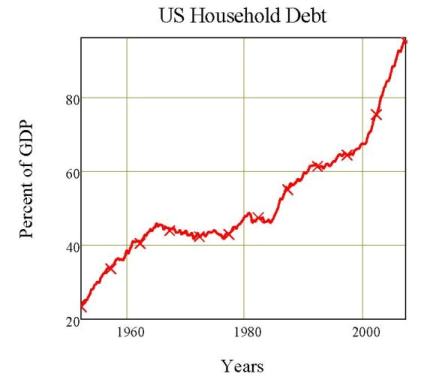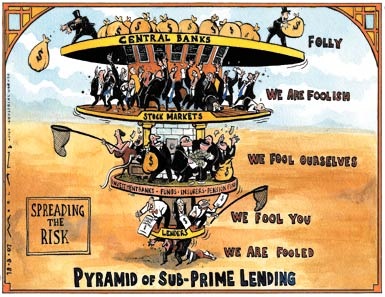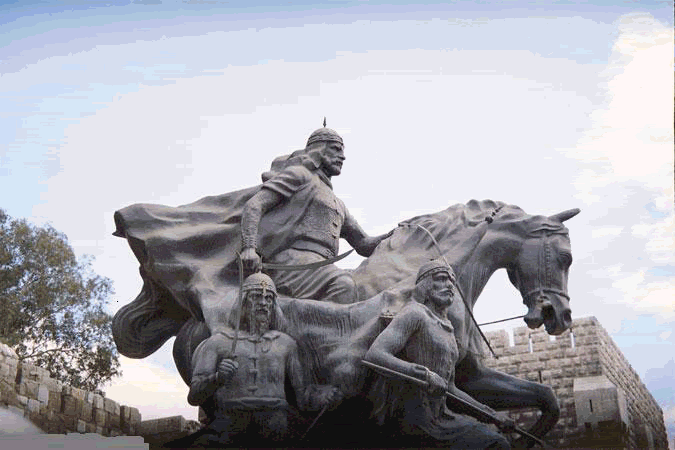Leaders of India’s 140-million-strong Muslim community have denounced the 26-29 November Mumbai attacks and thousands of Muslims have marched in protests against the bloodshed. It has been the strongest rejection yet of Islamist violence by Muslims.
“We have lost our children in the Mumbai attacks too. And we, as Indians, share a common grief and demand justice,” said Maulana Mehmood Daryabadi, general-secretary of the All-India Ulema Council, one of the biggest groupings of Muslim sects.
In Muslim neighbourhoods in the capital, residents observed low-key celebrations during an Islamic holiday in December.
Imran Ahmed, a bookseller, did not buy any new clothes for his children during the festival and did not distribute kebabs to neighbours as he does each year.
“So many people were killed by the terrorists. How could I celebrate?” asked the bearded bookseller, sitting outside his shop in the narrow, congested streets of Old Delhi. (via Muslims in India are under pressure, post-Mumbai - Economy and Politics - livemint.com).
In an earlier article, Krittivas Mukherjee had written how Indian debtors were prostituting their wives to money lenders in rural India - with out any source or data or frequency of incidents.
In his latest story (now joined with another Westernized bhadralok brother, Bappa Majumdar), they write about how afraid Indian Muslims are after the 26/11 Mumbai attack. Does he have data on how many Indian Muslims were attacked by Indian Hindus after 26/11? To put that in perspective - after 9/11 in the US, more than 200 attacks occured in the US on 500,000 Sikhs in a US population of 30 crores (300 million). I am not even counting attacks on 'guilty' Arabs and other Muslims. Let us not even talk about the Afghan and Iraqi invasions by the US - after 9/11.
Muslims cannot be patriotic ...
When Krittivas writes "That anger is mixed with fear of a backlash" he seems to imply that Indian Muslims cannot be reasonable, patriotic - and hence their anger against these attacks and subdued celebration were forced.
His source and authority for this statement - a (possibly senile, nearly) 80 year old journalist, whose claim to fame was his imprisonment more than 30 years ago by Indira Gandhi during the emergency. What is the data? None.
Their view of India ...
According to Krittivas, India is after all a country, where "in a country where Hindu nationalists often whip up anti-Muslim sentiment after such attacks." How many such incidents have ocurred where anti-Muslim sentiment in India has been whipped up? How many Muslims have been affected? No data. Sweeping statements. Would he like to mention any other country where such a large minority Muslim population, has greater freedom and opportunity.
Minorities in India
Muslims in India are persecuted as "Official figures show Muslims are under-represented in government jobs and the judiciary." Would he also like to show that a few years ago, the richest Indian (Azim Premjee) and the highest political post (APJ Kalam) in the country were held by Muslims. Would he like to show any other country where Muslims have greater freedom - and comprise such a large population? Maybe France, where they are not allowed to dress as they please. Or Britain where nearly 0.6% of the Muslim population is imprisoned.
Prison Population in India
Yet he does make a point how Muslims "are over-represented in the prison populations in many Indian states." Yet does he give any comparative statistics? None! Does he mention that India anyway has the lowest prison population in the world. That Muslim prison population in India is about 75,000 from 14 crore Muslims - compared to 10,000 from 16 lakhs in Britain.
Divide et impera
His knowledge of history is further revealed when he writes how "Centuries of rule of Hindu-majority India by mediaeval Muslim invaders drove a wedge between the two communities". Would he like to know how the Morley Minto reforms communlaized India. How divide et impera was British state policy in India.
That the Deoband School, which he quotes earlier, which rivals the Al Ahram Mosque of Egypt in authority, was against the formation of Pakistan.
Who was responsible for the Partition ...
He would however, not like to hold the British Raj responsible for "the blood-soaked birth of Pakistan, carved out from Muslim-majority areas of India in 1947." The abdication by the Colonial British administration, its response to the communal riots, are conveniently ignored. These riots managed by criminal elements were given a free hand by the British administration, to 'demonstrate' to the world, that Hindus and Muslims could not live together. It took Gandhiji to disarm this population.
He however does not miss to write about "communal riots in Gujarat in 2002, when around 2,500 people, mostly Muslims, were hacked and burnt to death" - against 200 attacks across US of the Sikhs.
Well paid hacks ...
This kind of propaganda does not wash in the West anymore - but when it lands on Indian shores, and carried by Indian media, this kind of glop makes me think of censorship ...
And flogging ...
 Three things...
Three things...














 Treasury Secretary Henry Paulson isn’t the devil ... (but) on his watch the US has morphed into a huge debt-issuing machine ... (and) the US deficit will more than double this year to at least $1.18 trillion, the biggest since World War II. The CBO’s estimates don’t include the cost of the president-elect’s stimulus package, which will probably add at least $750 billion to the total over the next two years. Last year’s shortfall totalled $455 billion.
Treasury Secretary Henry Paulson isn’t the devil ... (but) on his watch the US has morphed into a huge debt-issuing machine ... (and) the US deficit will more than double this year to at least $1.18 trillion, the biggest since World War II. The CBO’s estimates don’t include the cost of the president-elect’s stimulus package, which will probably add at least $750 billion to the total over the next two years. Last year’s shortfall totalled $455 billion.









